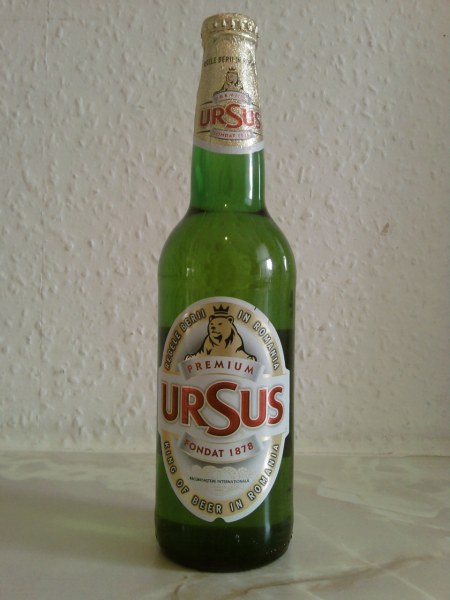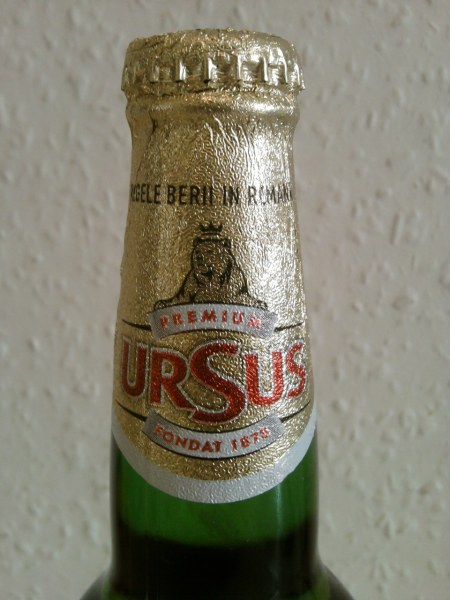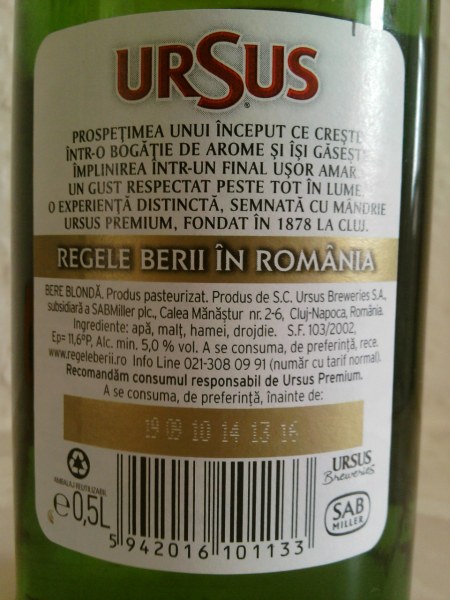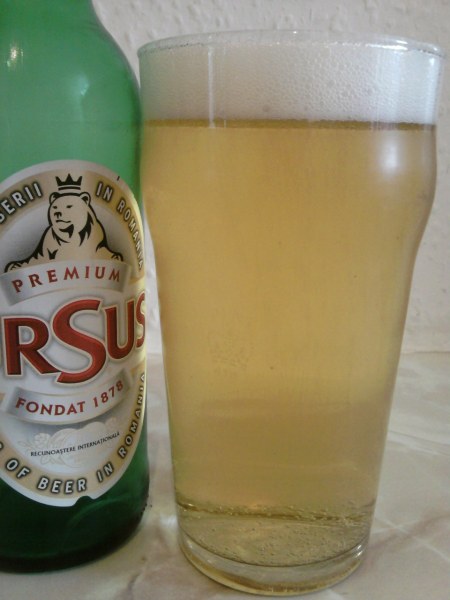IF you’re reading this, chances are that you’ve also read my ancient Innis & Gunn Original Oak Aged Beer ‘review’. And judging by the comments, you loved it as much as I did. So, here it is again…
Or is it? At first glance, it looks nearly identical to its Scotch inspired cousin. The same little bottle with much the same labels. Examine it a little closer however, and you realise that this is going to be a different type of first-class beverage. That comparing this to its cousin would be like comparing a Gieves & Hawkes suit to hedge fund. That said, I did purchase both (the Innis & Gunn beers, not the tailoring or investments) from Tesco at well under the £2 mark.
Oak ageing is to be encouraged. In fact, so enthusiastically have they been encouraged by Innis & Gunn’s lead, that other brewers now make similar ale. Which means that Innis & Gunn is no longer “Oak Aged Like No Other Beer”.
Assuming you didn’t notice the different colour (which I didn’t); it’s only when you reach the main front label that you notice the difference. Not even I missed the fact that this beer was oak aged in rum casks.
To its credit, practically everything you want to know about ‘Rum Cask’ is right there on the front labels. Including that it’s “Brewed In Small Batches” and “Hand Crafted Scottish Beer”. Helpfully, they even print basic tasting notes. In this case (or should that be ‘cask’), they describe it as “Fully Bodied Scottish Beer Bursting With Fruity And Spicy Notes”. Experienced ale drinkers will think that looks like the tasting notes for hoppy English ale. Is that what it tastes like?
Down here, we spot another important difference between Rum Cask and Original.
Original was matured for 77 days. Rum Cask here was matured for 57. Are those missing twenty days important? If you think they are, then you know what to do in the comments section at the end of this post.
Rotate the bottle one-hundred-and-eighty degrees, and you find a neat little semi-transparent rear label.
It begins with a helpful blurb. From this blurb, we learn that Innis & Gunn have been experimenting with variations on the theme of oak barrel maturation. That this one, Rum Cask, is one of their favourites. Apparently, they use American oak and rum infused oak. And that this “has impoarted this beer with a delicious warming character that is bursting with fruit and lively spiciness”. That sounds delicious on a cold winter’s night like this one. But I can’t help wondering if they’ve inadvertently re-invented the hoppy English ale. Whatever the case, I can hardly wait to find out.
Next, they helpfully suggest a serving temperature. In this instance, between 4 to 6 degrees C. I guess that equates to room temperature in my cold London flat. Americans and Australians, you might want to store it in a refrigerator during the summer months. It’s also worth pointing out how blindingly obvious it is to put serving temperatures on an expensive bottle of ale. So obvious, that most brewers don’t. So well done Innis & Gunn for being user-friendly.
Even further down the back label are the vital statistics and small-print. First, the alcoholic volume which is a hearty 7.4%. In this 330 millilitre bottle, that equates to 2.4 UK units of alcohol. Or in the vicinity of half of what doctors say you can safely drink per day.
Next, there’s Innis & Gunn’s contact information. For the obsessively curious, it gives their Edinburgh address. For the casually curious, it gives their web address of www.innisandgunn.com. On their helpful and interesting website, you’ll find their Rum Cask product page at http://www.innisandgunn.com/the-range/rum-cask.aspx
The last nuggets of useful information on the back label, are that Rum Cask is a “Product of Scotland”. That it is “Strong Beer”. And that it “Contains Barley Malt”. Nothing surprising at all.
So at long last, here is the bit where I open the bottle and use words to describe what the contents smell and taste like. If you scrolled straight down to this bit, I don’t blame you. So, using the wrong type of glass, chilled by my chilly flat, here is Innis & Gunn Rum Cask poured.
Pouring was a doddle, thanks to a very controllable head. The cream coloured head, once poured, reverts back to liquid within two or three minutes. With other beers, that would be an annoyance. But with Innis & Gunn Rum Cask, it feels more like a feature, designed to make you wait, and savour it properly.
In the glass, the colour will come as no surprise. I’d call it somewhere between red and brown. Not quite copper, but not far from it. What does Innis & Gunn Rum Cask smell like? It’s pungent enough to hit your nostrils during the pour, but working out what it is you can smell is puzzling. The first impression you get is that it smells light and fresh. Some thorough sniffing later, and all I can discern are a sort of fruity vanillaryness. In short, it smells intriguing and delicious.
Abandoning my attempt to understand the odour, I turn my attention to how Innis & Gunn Rum Cask taste. Remembering that the label used words like “warming”, “fruity” and “spicy”, I’m delighted to say that the very first sip delivered precisely those three words. And so does the second sip. And the third. It’s not at all the variation on English hoppy ale that I was expecting. But as with the smell, finding words to describe it within the limits of a single little bottle are difficult. If you’re lucky enough to have had a few of these, add your own insight in the comments below.
To pull this ‘review’ back from that cop out, I’d describe the flavour as being almost absent. There are some very mild hints of savoury, oaky, fruity, initial bitterness. But Innis & Gunn Rum Cask comes alive with the aftertaste, finish and feeling it gives you. It is dominated by a rich, smokey, oaky, somewhat spicy, fruity and mildly bitter finish. Rich and momentarily intense, but not strong, not overly bitter or too long lasting. And yes, after a good few sips, you even I can detect a tiny taste of rum. All of these qualities make for a warming and distinctive drink.
What am I enjoying about Innis & Gunn Rum Cask so far? As you can probably tell, quite a lot. I love how unusual the taste is. It provides a much bigger taste experience than the Scotch based Original. Oversimplifying, it’s taste of oak and rum is unique, as far as I know. The taste matches the bottle label descriptions, which was unexpected. It is rich and warming to drink, which makes it a great autumn and winter beverage. At 7.4%, I’m discovering that this small 330 millilitre bottle is adequately strong for a weekday evening drink. It’s relatively hard to find, which makes it exclusive and makes you look like a connoisseur. And if you can find a supermarket like Tesco that sells it, purchasing it won’t empty your wallet.
What am I disliking about Innis & Gunn Rum Cask? Not much. To pad out this paragraph, only nitpicking really. A sweeter, fruiter flavour could have been welcome. Or any real flavour, for that matter. But it’s hard to see that playing well with the massive aftertaste and finish. It is however, quite dry, and would be a challenge to drink a lot of over a single night. Nevertheless, I’m up for that challenge. Lastly, price and availability appear to depend on chance and where you live.
How can I sum up Innis & Gunn Rum Cask? It turned out to be completely different to the taste of hoppy ale that I was expecting. It delivers everything it promises in the taste and character departments. By loading the aftertaste with rum driven fruitiness and spiciness and oak powered smokiness, it is bonkers in a sophisticated way. Like Timmy Mallett becoming Chairman of the English National Opera. Personally, I loved it. But not everyone will. If you like intense originality, then add Rum Cask to your ‘to do’ list. If you’re not so keen on that sort of thing, wait until autumn or winter, and then give it a try. If you’re timid, then try the Scotch based Innis & Gunn Original and you’ll love that.
Have you tried Innis & Gunn Rum Cask? Then share your opinions, recommendations and places to buy, in the comments section below.










































































































